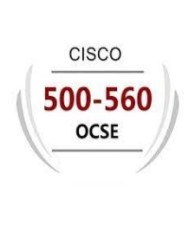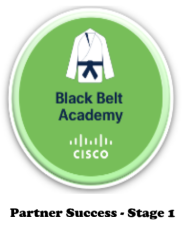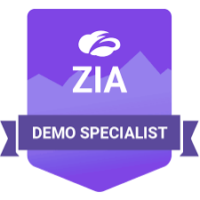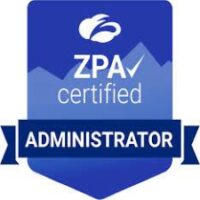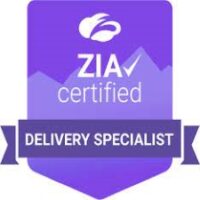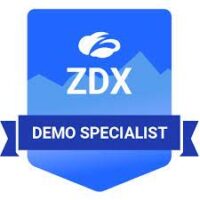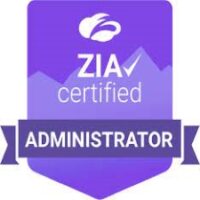The journey to achieving compliance with the Cybersecurity Maturity Model Certification (CMMC) isn’t meant to become a checklist exercise; CMMC is a cybersecurity catalyst driving significant organizational security—and value—by transforming IT operations and reducing complexities. In the previous blog, Cracking the CMMC Code Using Zero Trust, we covered the parallels between CMMC and Zero Trust’s security and compliance approach, showing that the steps needed to build a Zero Trust architecture and CMMC compliance are incredibly similar:Define the surfaceMap transactional flowsBuild architectureCreate the policiesMonitor and maintain the network This Zero Trust and CMMC architect workflow enables organizations to move beyond task-based compliance and instead establish scalable, secure, resilient, and modernized data-centric environments. Just as what is worth doing is worth doing right, so is ensuring the value of an organization’s time and resources. To do this, Zscaler measures the Return on Investment (ROI) of its Zero Trust architecture, all while enabling a streamlined path to CMMC compliance. By adopting a modern approach to cybersecurity aligned with Zero Trust principles, organizations can replace outdated legacy systems with a modern, scalable cyber security platform —one that simplifies compliance and delivers tangible business value. Five Key Value Drivers in Zero Trust-CMMC ImplementationThe evolutionary journey to a Zero Trust Architecture unifies cybersecurity offerings and operational strategies, consolidating what has previously been managed as disparate, siloed solutions. An IBM study reveals that many organizations maintain over 30 standalone security tools, each designed to address specific risks. These tools often fail to integrate seamlessly, adding inefficiencies to both cybersecurity operations and compliance efforts. Other than just hardware and licensing costs, there are usually additional (intangible) costs that ripple throughout the organization, including procurement, training, maintenance and vendor management costs. In contrast, a CMMC-empowered Zero Trust Architecture leverages platforms purpose-built for modern IT environments, consolidating functionality to streamline management and compliance. Organizations save money, enhance agility, and build a scalable security model that continuously adapts to threats. The ROI can be measured across five critical value drivers:Optimized IT Costs: Consolidating legacy security tools reduces licensing fees, data storage expenses, and administrative support requirements. The hard savings from retiring point solutions and adopting a unified Zero Trust platform directly improve budgets.Agility: Organizations benefit from increased agility in scaling operations, adding new applications, or undergoing mergers and acquisitions. Instead of spinning up a new network post-merger, organizations can rely on policy-driven architectures to integrate workflows quickly—often within weeks instead of months.Improved User Experience: Zscaler’s Zero Trust platform eliminates cumbersome processes such as VPN connectivity or backhauling data traffic through legacy environments. By directly connecting users to applications and resources rather than networks, latency is reduced, improving productivity and satisfaction across the user base.Strengthened Security Posture: A key aspect of Zero Trust architecture is eliminating lateral movement—the ability of a threat to propagate across an enterprise network once breached. Zscaler does not place users on the network, thus mitigating lateral movement. Zscaler enforces Zero Trust access policies that compartmentalize resources, significantly reducing the impact of attacks like ransomware or insider threats.Operational Efficiency: Managing fewer platforms and tools frees up significant IT labor resources. Staff previously dedicated to supporting legacy solutions and manual CMMC compliance processes can pivot to higher-order activities like threat hunting, policy refinement, or innovation-driven projects. Showcasing ROI with Quantifiable BenefitsThe connection between Zero Trust implementation, CMMC compliance, and ROI can be quantified systematically using a detailed business value framework. Zscaler’s methodology, which we shared in installment 2 of our recent CMMC webinar series, demonstrates how structured analyses pinpoint savings and improvements across operational metrics.One example we shared during the webinar demonstrates how these value drivers translate into measurable financial success. For one defense contractor, our Business Value Assessment (BVA) calculated a 197% ROI after implementing Zero Trust solutions. The savings stemmed from multiple sources: retiring redundant products, reducing labor costs, mitigating risks, and enhancing user experience. What’s more, the streamlined approach to compliance meant achieving CMMC maturity levels faster and with less effort. As we demonstrated, achieving Zero Trust provides a natural foundation for meeting CMMC requirements, often addressing controls in ways that legacy solutions cannot.Security Posture & Risk ReductionTo quantify the security value of Zero Trust, we use tools like the MITRE ATT&CK framework and advanced modeling techniques, including Monte Carlo analysis. These methodologies allow us to objectively measure your current security state and calculate your future state under Zero Trust solutions, helping you understand how adopting Zero Trust reduces breach probabilities and mitigates financial risk.Zero Trust frameworks directly improve organizations’ resiliency to cybersecurity breaches. By leveraging tools like the MITRE ATT&CK framework, organizations can evaluate their current-state security coverage against critical stages of the cyber kill chain (e.g., initial access, privilege escalation, data exfiltration). Organizations using Zscaler’s solutions saw a 52% increase in coverage, shifting from fragmented security products to integrated Zero Trust systems.The financial implications of better security posture are assessed using industry-specific data. Third-party studies provide baseline calculations for the probability of breaches and the corresponding lower/upper bounds of financial impact. Monte Carlo analyses and probability metrics then quantify the tangible savings organizations achieve through reduced likelihood of data exploitation under a Zero Trust framework.For example, one healthcare customer saw their probability of breach decline from 23.1% to 9.3%, resulting in millions in projected cost avoidance due to reduced risk. Operational Efficiency GainsZero Trust implementations replace labor-intensive security stacks with streamlined platforms. Organizations report savings as IT administrators focus on higher-order goals rather than maintaining outdated hardware and software. For example, reduced time spent configuring legacy tools meant operational labor decreased by 66%, allowing IT personnel to focus on tasks like refining security protocols and threat detection. User Experience Improvement:In addition to reducing latency and downtime associated with VPNs, Zero Trust solutions enhance application responsiveness by leveraging direct access models. Quantifying these gains yields concrete results; for instance, in industries with remote workforces, saved user hours and improved workflows translate into significant financial benefits. Common security friction points include:Backhauling Traffic thru Data CenterJuggling multiple VPN Domains, Laptops or VDI Instances just to get your work doneVPN Logins, VPN Infrastructure Downtime, VPN Connection DropsBlocking Websites with “Allow” listsMonths (12-18) to onboard Acquired Co’s Apps by Rationalizing IP addressesExtensive Security & Network related foundational work to onboard Third Party PartnersEach friction point can be quantified and a calculation of annual productivity gain adds to the ROI from improving the end user experience with Zero Trust.Tailoring Zero Trust to CMMC ComplianceAs a member of Zscaler’s Business Value Creation Team, Steve Chiodini developed tools specifically designed to align Zero Trust adoption with compliance frameworks like CMMC. During the webinar, we showcased how these tools provide a visual representation of compliance readiness and control coverage.For example, one tool we use maps CMMC Level 2 and Level 3 requirements against Zscaler’s capabilities. The visual summary shows areas of strength, gaps that need addressing, and how specific products can be leveraged to meet additional controls. The ability to evaluate this in real-time helps organizations understand where they currently stand and plan their path forward. While Zscaler solutions provide strong coverage across many CMMC controls, we always emphasize that compliance frameworks typically require a combination of solutions—such as endpoint protection and identity providers. This ensures your organization has a complete roadmap to maturity.Final Thoughts: A Smarter Path to Compliance and ROIYes, achieving CMMC compliance includes challenges, but the opportunities to modernize outweigh compliance theatre. While requirements demand greater visibility, control, and system transparency, the journey to compliance can produce operational and financial savings that extend well beyond regulatory mandates. For a more detailed look at the BVA process, watch the webinar on demand. We are also happy to discuss how Zscaler can quantify the value of our Zero Trust platform for your organization – just reach out and we’ll set up an exploratory meeting.By embracing Zero Trust principles, organizations experience reduced IT costs, improved user satisfaction, enhanced security consistency, and unparalleled agility—the core enablers of long-term ROI.
[#item_full_content] The journey to achieving compliance with the Cybersecurity Maturity Model Certification (CMMC) isn’t meant to become a checklist exercise; CMMC is a cybersecurity catalyst driving significant organizational security—and value—by transforming IT operations and reducing complexities. In the previous blog, Cracking the CMMC Code Using Zero Trust, we covered the parallels between CMMC and Zero Trust’s security and compliance approach, showing that the steps needed to build a Zero Trust architecture and CMMC compliance are incredibly similar:Define the surfaceMap transactional flowsBuild architectureCreate the policiesMonitor and maintain the network This Zero Trust and CMMC architect workflow enables organizations to move beyond task-based compliance and instead establish scalable, secure, resilient, and modernized data-centric environments. Just as what is worth doing is worth doing right, so is ensuring the value of an organization’s time and resources. To do this, Zscaler measures the Return on Investment (ROI) of its Zero Trust architecture, all while enabling a streamlined path to CMMC compliance. By adopting a modern approach to cybersecurity aligned with Zero Trust principles, organizations can replace outdated legacy systems with a modern, scalable cyber security platform —one that simplifies compliance and delivers tangible business value. Five Key Value Drivers in Zero Trust-CMMC ImplementationThe evolutionary journey to a Zero Trust Architecture unifies cybersecurity offerings and operational strategies, consolidating what has previously been managed as disparate, siloed solutions. An IBM study reveals that many organizations maintain over 30 standalone security tools, each designed to address specific risks. These tools often fail to integrate seamlessly, adding inefficiencies to both cybersecurity operations and compliance efforts. Other than just hardware and licensing costs, there are usually additional (intangible) costs that ripple throughout the organization, including procurement, training, maintenance and vendor management costs. In contrast, a CMMC-empowered Zero Trust Architecture leverages platforms purpose-built for modern IT environments, consolidating functionality to streamline management and compliance. Organizations save money, enhance agility, and build a scalable security model that continuously adapts to threats. The ROI can be measured across five critical value drivers:Optimized IT Costs: Consolidating legacy security tools reduces licensing fees, data storage expenses, and administrative support requirements. The hard savings from retiring point solutions and adopting a unified Zero Trust platform directly improve budgets.Agility: Organizations benefit from increased agility in scaling operations, adding new applications, or undergoing mergers and acquisitions. Instead of spinning up a new network post-merger, organizations can rely on policy-driven architectures to integrate workflows quickly—often within weeks instead of months.Improved User Experience: Zscaler’s Zero Trust platform eliminates cumbersome processes such as VPN connectivity or backhauling data traffic through legacy environments. By directly connecting users to applications and resources rather than networks, latency is reduced, improving productivity and satisfaction across the user base.Strengthened Security Posture: A key aspect of Zero Trust architecture is eliminating lateral movement—the ability of a threat to propagate across an enterprise network once breached. Zscaler does not place users on the network, thus mitigating lateral movement. Zscaler enforces Zero Trust access policies that compartmentalize resources, significantly reducing the impact of attacks like ransomware or insider threats.Operational Efficiency: Managing fewer platforms and tools frees up significant IT labor resources. Staff previously dedicated to supporting legacy solutions and manual CMMC compliance processes can pivot to higher-order activities like threat hunting, policy refinement, or innovation-driven projects. Showcasing ROI with Quantifiable BenefitsThe connection between Zero Trust implementation, CMMC compliance, and ROI can be quantified systematically using a detailed business value framework. Zscaler’s methodology, which we shared in installment 2 of our recent CMMC webinar series, demonstrates how structured analyses pinpoint savings and improvements across operational metrics.One example we shared during the webinar demonstrates how these value drivers translate into measurable financial success. For one defense contractor, our Business Value Assessment (BVA) calculated a 197% ROI after implementing Zero Trust solutions. The savings stemmed from multiple sources: retiring redundant products, reducing labor costs, mitigating risks, and enhancing user experience. What’s more, the streamlined approach to compliance meant achieving CMMC maturity levels faster and with less effort. As we demonstrated, achieving Zero Trust provides a natural foundation for meeting CMMC requirements, often addressing controls in ways that legacy solutions cannot.Security Posture & Risk ReductionTo quantify the security value of Zero Trust, we use tools like the MITRE ATT&CK framework and advanced modeling techniques, including Monte Carlo analysis. These methodologies allow us to objectively measure your current security state and calculate your future state under Zero Trust solutions, helping you understand how adopting Zero Trust reduces breach probabilities and mitigates financial risk.Zero Trust frameworks directly improve organizations’ resiliency to cybersecurity breaches. By leveraging tools like the MITRE ATT&CK framework, organizations can evaluate their current-state security coverage against critical stages of the cyber kill chain (e.g., initial access, privilege escalation, data exfiltration). Organizations using Zscaler’s solutions saw a 52% increase in coverage, shifting from fragmented security products to integrated Zero Trust systems.The financial implications of better security posture are assessed using industry-specific data. Third-party studies provide baseline calculations for the probability of breaches and the corresponding lower/upper bounds of financial impact. Monte Carlo analyses and probability metrics then quantify the tangible savings organizations achieve through reduced likelihood of data exploitation under a Zero Trust framework.For example, one healthcare customer saw their probability of breach decline from 23.1% to 9.3%, resulting in millions in projected cost avoidance due to reduced risk. Operational Efficiency GainsZero Trust implementations replace labor-intensive security stacks with streamlined platforms. Organizations report savings as IT administrators focus on higher-order goals rather than maintaining outdated hardware and software. For example, reduced time spent configuring legacy tools meant operational labor decreased by 66%, allowing IT personnel to focus on tasks like refining security protocols and threat detection. User Experience Improvement:In addition to reducing latency and downtime associated with VPNs, Zero Trust solutions enhance application responsiveness by leveraging direct access models. Quantifying these gains yields concrete results; for instance, in industries with remote workforces, saved user hours and improved workflows translate into significant financial benefits. Common security friction points include:Backhauling Traffic thru Data CenterJuggling multiple VPN Domains, Laptops or VDI Instances just to get your work doneVPN Logins, VPN Infrastructure Downtime, VPN Connection DropsBlocking Websites with “Allow” listsMonths (12-18) to onboard Acquired Co’s Apps by Rationalizing IP addressesExtensive Security & Network related foundational work to onboard Third Party PartnersEach friction point can be quantified and a calculation of annual productivity gain adds to the ROI from improving the end user experience with Zero Trust.Tailoring Zero Trust to CMMC ComplianceAs a member of Zscaler’s Business Value Creation Team, Steve Chiodini developed tools specifically designed to align Zero Trust adoption with compliance frameworks like CMMC. During the webinar, we showcased how these tools provide a visual representation of compliance readiness and control coverage.For example, one tool we use maps CMMC Level 2 and Level 3 requirements against Zscaler’s capabilities. The visual summary shows areas of strength, gaps that need addressing, and how specific products can be leveraged to meet additional controls. The ability to evaluate this in real-time helps organizations understand where they currently stand and plan their path forward. While Zscaler solutions provide strong coverage across many CMMC controls, we always emphasize that compliance frameworks typically require a combination of solutions—such as endpoint protection and identity providers. This ensures your organization has a complete roadmap to maturity.Final Thoughts: A Smarter Path to Compliance and ROIYes, achieving CMMC compliance includes challenges, but the opportunities to modernize outweigh compliance theatre. While requirements demand greater visibility, control, and system transparency, the journey to compliance can produce operational and financial savings that extend well beyond regulatory mandates. For a more detailed look at the BVA process, watch the webinar on demand. We are also happy to discuss how Zscaler can quantify the value of our Zero Trust platform for your organization – just reach out and we’ll set up an exploratory meeting.By embracing Zero Trust principles, organizations experience reduced IT costs, improved user satisfaction, enhanced security consistency, and unparalleled agility—the core enablers of long-term ROI.

